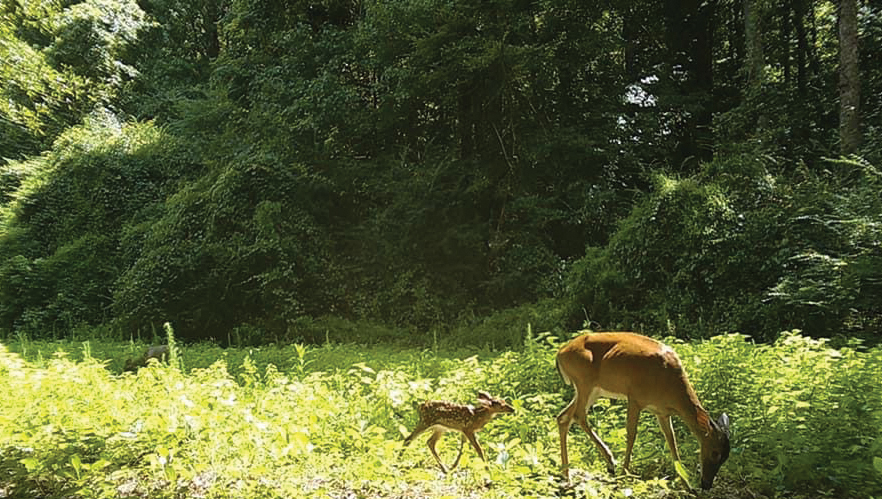MDWFP: It’s always best to leave young wildlife alone
Published 10:00 am Wednesday, June 25, 2025

- PHOTO BY HUNTER CLOUD It is almost peak fawning time in Southwest Mississippi. Fawns like this one hide in thick cover early in its life before it is old enough to move with its mother. This doe and fawn are in a food plot next to thick cover. It is best for habitat managers to wait to mow or bush hog fields until August to avoid harming fawns or young turkey poults.
BROOKHAVEN — As the summer continues, young wildlife are being born. The Mississippi Department of Wildlife, Fisheries and Parks advises it is always best to leave young wildlife alone.
According to MDWFP, many Mississippians will likely come across some type of wildlife that appears to have been abandoned. Fawns, baby deer, being one of the more common animals people believe to have been abandoned along with young squirrels and birds.
“Oftentimes people mean well and pick up these animals in an attempt to care for them, but doing so can often do more harm than good,” MDWFP states.
Trending
Mississippi state law prohibits the capture, possession or caging of any wild animal including deer, squirrels and birds.
Additionally, there are health concerns with fawns as Chronic Wasting Disease continues to spread in Mississippi. The disease has not been known to be present in humans but the Center for Disease Control advises people to exercise caution. As previously reported by The Daily Leader, one reason it is illegal to rehabilitate a fawn in Mississippi is due to the potential risk of spreading CWD to uninfected areas of the state.
Peak fawning dates for Lincoln County are at the end of July, although dates are dependent on when does were bred. Does take care to hide fawns in thick cover, although in the presence of poor cover fawns may be found in flower beds around homes. Fawns will lower their heart rate to remain still when they sense danger so it is best to leave fawns alone.
The most impactful practice people can do to help young wildlife is to manage habitat to provide quality cover and food sources. For deer, this means encouraging native forbs through disturbance to help does who are nursing and fawns as they begin to forage. Late summer is one of two stress periods for deer, late winter being the other stress period.
To learn more about how you can help deer and other wildlife visit MDWFP.com and request a private land site visit.





